Sony wildlife photographers have a healthy selection of telephoto lenses to choose from, including the 200-600mm G, 400-800mm G, 400mm f/2.8 GM, and 600mm f/4 GM. All of which I have used, and three of which I currently own. However, there is another telephoto lens in my collection that continues to astound me, and recently I found myself asking a seemingly bizarre question: Should I buy a second one?
I am, of course, talking about the ultra-versatile Sony 300mm f/2.8 GM. A lens that delivers the best with-teleconverter performance and image quality I have seen to date, and one that quickly earned a place on my list of all-time excellent photographic optics, and best Sony wildlife photography lenses. The 300mm GM brings a smile to my face every time I grab it from my gear closet, which is often.
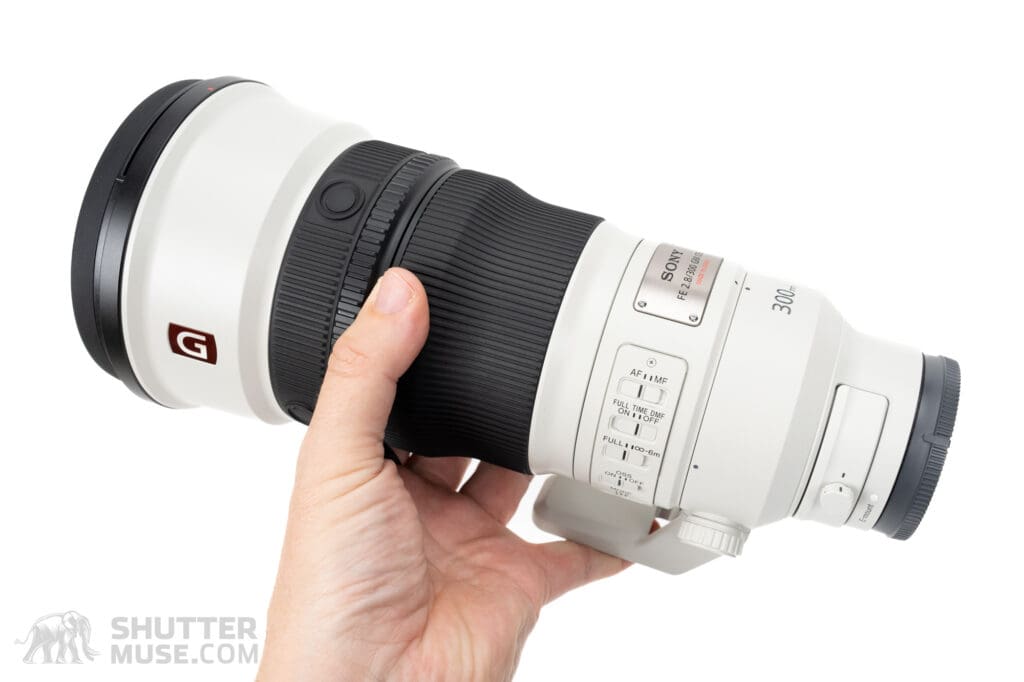
You’re probably thinking, “That’s great, Dan. It’s a nice lens. But it costs $6500, and if yours is still working, why would you ever consider buying another?” That’s a fair question. In 20+ years as a professional photographer, I have never considered owning two copies of the same lens. Still, I now have reasons to consider this option and to recommend it to the many people who ask me for gear advice, assuming budget allows the option. In this article, I’ll explain my reasoning and why owning a pair of $6,500 lenses might actually save you money.
Why trust me? The internet is full of garbage written by AI and people who pretend to use the photo gear they are testing. On the other hand, I get out there and do the work, as evidenced by the images I create along the way and the stories I share with my followers. If you want to support an independent creator, please consider sharing this article, subscribing to my newsletter, leaving a tip, or purchasing through links on this page.
My Sony 300mm f/2.8 GM was purchased at retail price through regular retail channels. Don’t have yours yet? Support my efforts by buying it through one of the links below:
- Sony 300mm f/2.8 GM – Amazon / B&H / Adorama / Lensrentals / WEX (UK) / Camera Canada
- Sony 1.4x Teleconverter – Amazon / B&H / Adorama / Lensrentals / WEX (UK) / Camera Canada
- Sony 2x Teleconverter – Amazon / B&H / Adorama / Lensrentals / WEX (UK) / Camera Canada
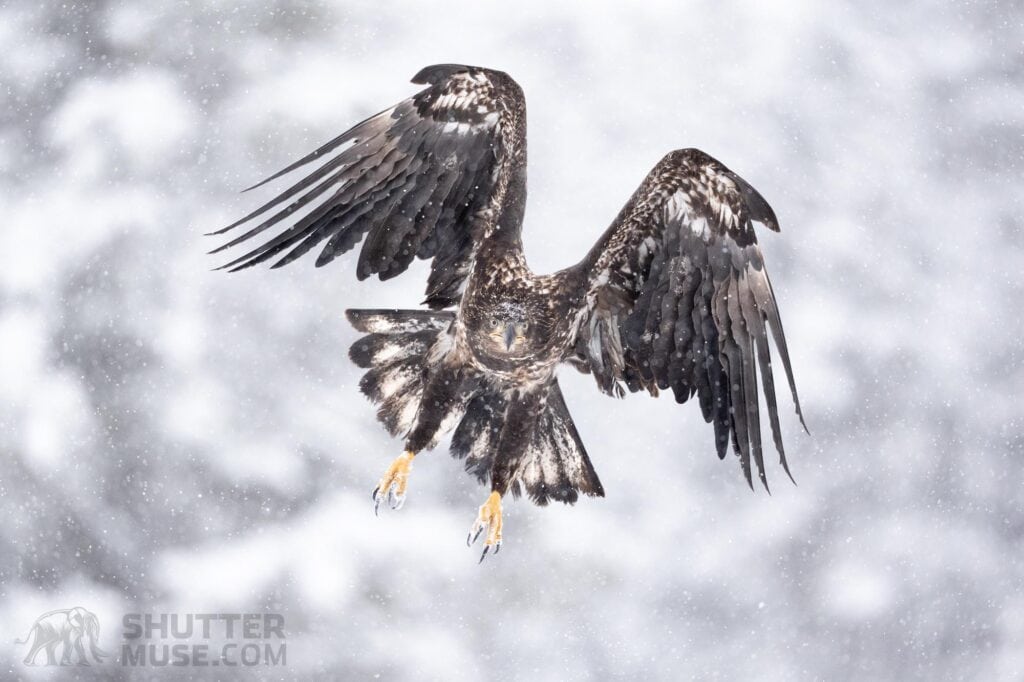
Table of Contents
Focal Length Coverage for Wildlife Photography
To understand my reasoning, we should begin by discussing the focal lengths most frequently used by wildlife photographers. It’s common for wildlife photographers to travel with a pair of cameras and two telephoto lenses to quickly capture a variety of compositions during an animal encounter, or to have a second lens that’s lighter and more maneuverable than their primary lens for capturing birds in flight or other fast-paced action. The perfect pairing depends on the size of the intended target at a location, but some common pairings that I have used myself, seen colleagues using, or encountered while leading wildlife photography workshops include:
- 70-200mm GM + 200-600mm G
- 200-600mm G + 400mm f/2.8
- 200-600mm G + 600mm GM
- 70-200mm GM + 400-800mm G
- 100-400mm GM + 400-800mm G
- 100-400mm GM + 600mm GM
- 300mm GM + 600mm GM
- 300mm GM + 70-200mm GM II
- 70-200mm GM + 300mm GM
All lens pairings have advantages and disadvantages, but one of the main concerns for many people is overall size and weight, especially when traveling on international flights. For example, I love the combination of my 300mm GM and 600mm GM lenses. With these lenses and a pair of teleconverters, I can reach focal lengths of 300mm, 420mm, 600mm, 840mm, and 1200mm—perfect for a location that may have everything from small birds to large mammals. However, the combined weight of those two lenses is 9.9 lb (4510 g). Add a pair of Sony a1 II cameras, and we’re already at 13.2 lb (5996 g). If you need to carry anything else in your carry-on, like spare batteries, SSDs, a laptop, or a wide-angle lens, you might exceed many carry-on weight limits, especially in Africa (bush planes) and Oceania (ludicrous carry-on policies).
Yes, you could take a risk and stash one or two pieces of gear in a Pelican photography case in your checked luggage, but this doesn’t help if you’re flying in a bush plane where your total luggage weight is the limiting factor, not just your carry-on weight. Besides the fact that some of these combinations exceed baggage limits, lugging a 10 kg camera bag through airports worldwide is no fun at best, and downright miserable if you’re nearing your senior years… ahem, in the prime of your life. So, how do you tackle the need for a lightweight kit while maintaining the outstanding image quality you’re seeking on a trip that is costing you a small fortune? The key may lie with the 300mm GM lens.
300mm GM and the Teleconverter Shuffle
The 300mm f/2.8 GM lens offers excellent autofocus performance and image quality with or without teleconverters, giving options for a 300mm f/2.8, a 420mm f/4, and a 600mm f/5.6 lens in a compact, easy-to-hold package. I have a separate article that explores the teleconverter performance of the Sony 300mm f/2.8 GM lens in more detail, so I won’t go further into that here. However, I will include an example below showing the difference between these focal lengths.
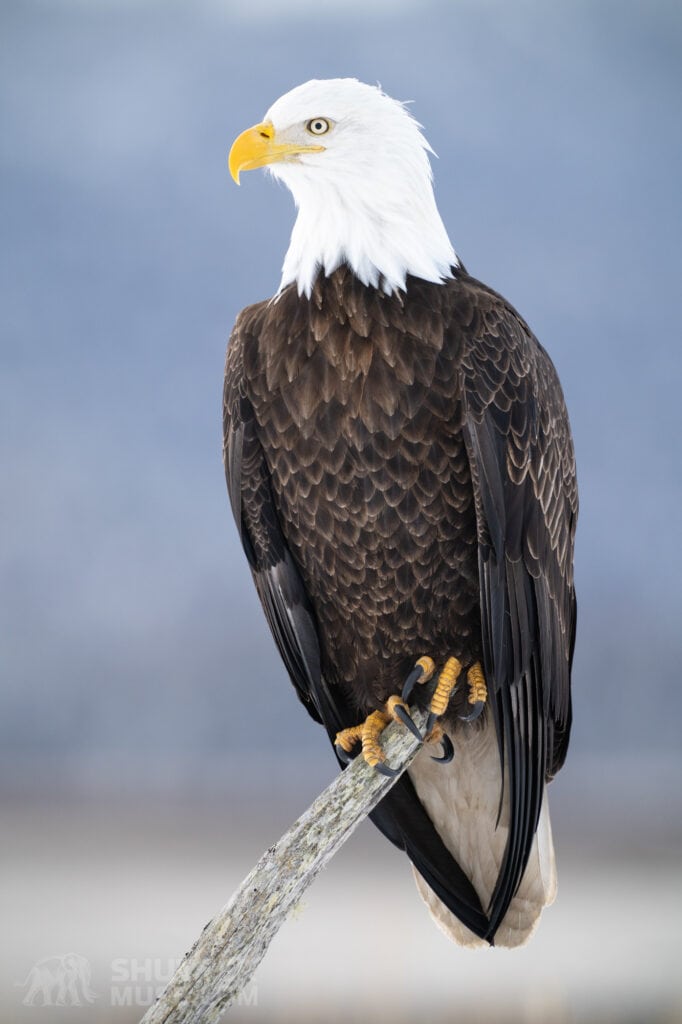
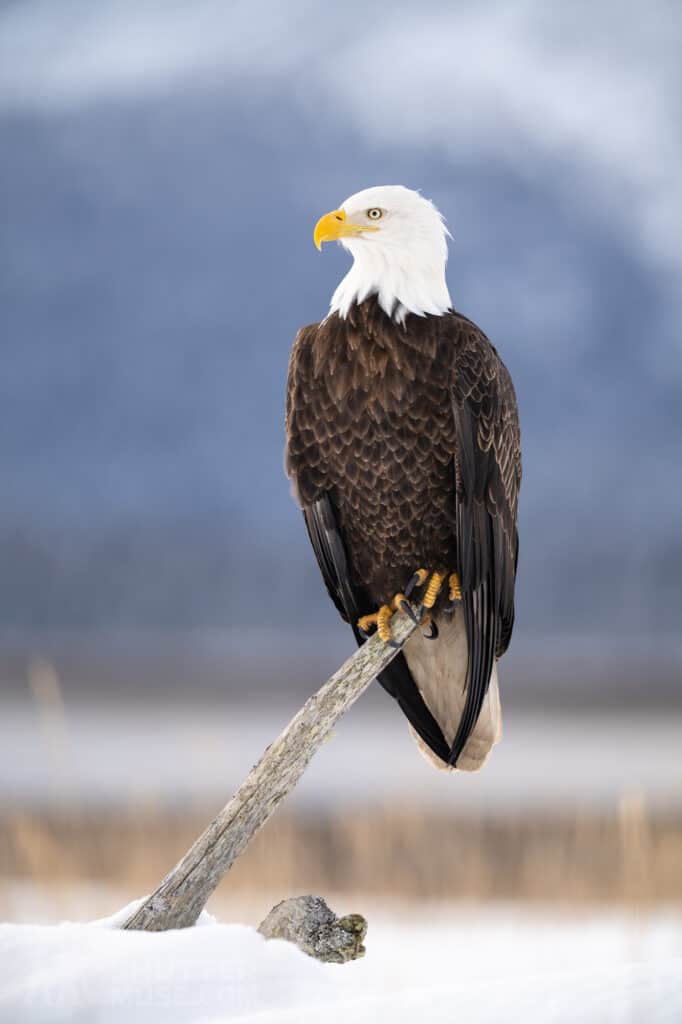
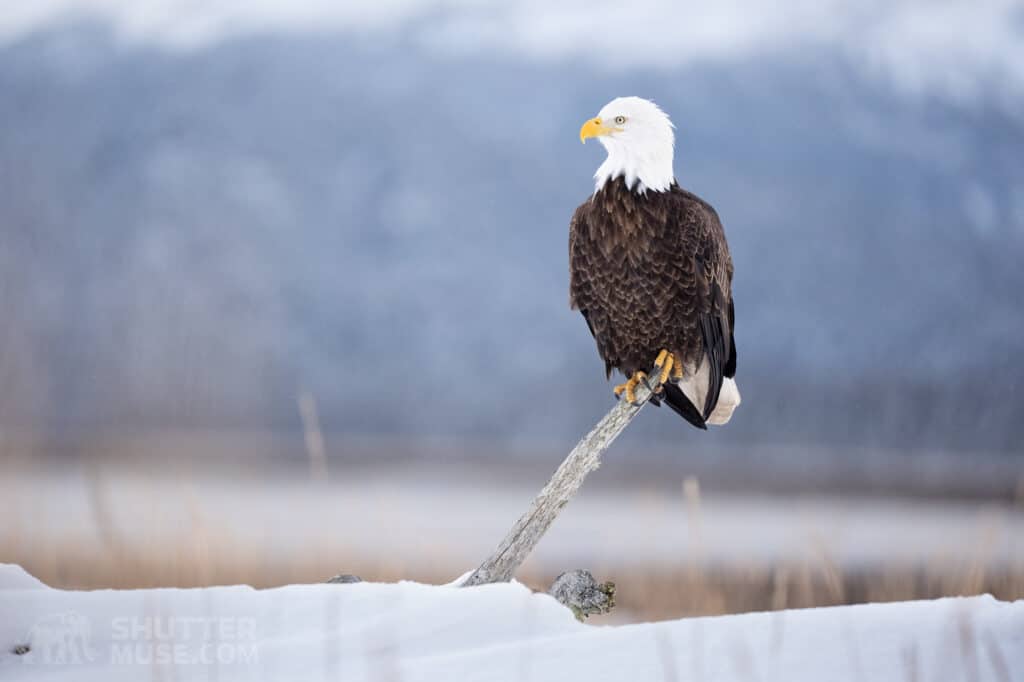
The examples of the bald eagle are unusual because that subject sat perfectly still while I carefully switched between the teleconverters in a wintery Alaskan environment, while lying in the snow, I might add. Wildlife usually isn’t that cooperative! And here lies the problem. The 300mm GM lens performs so well with both teleconverter options that, if it’s your only telephoto lens, you’ll constantly want to switch them back and forth to capture as many compositions as possible from an encounter. This teleconverter shuffle might will cause you to miss a key moment and, in dusty safari environments, can lead to sensor dust issues. The solution—using a second camera body with a different lens focal length—brings us back to the previous list of common lens pairings, so let’s talk through some of those options in more detail.
Telephoto Lens Options and Pairings
These options are not exhaustive, but other choices would likely involve similar considerations. I believe these serve as solid foundational options you can build on. For example, you could swap the 600mm f/4 GM for a 400mm f/2.8 GM in all of them, and while the numbers change, the main points remain the same.
Before someone says, “Aha! But if you just choose a single lens, you’ll only be carrying the weight of, and paying the cost of, a single camera body!” I will just remind you that you’d be crazy to travel halfway around the world on a trip that costs you a mid-to-high (or more) four-figure sum without a backup camera body in your bag. You’ll always want two cameras, whether you are using them simultaneously or not.
Solo 600mm f/4 GM

- Price – $13,700
- Weight – 6.7 lb / 3040 g
Many people who own the 600mm f/4 GM find this weight sufficient to carry on its own. If you combine it with a 1.4x and 2x teleconverter, it can be a reasonable choice if your primary focus is small birds. However, if you’re visiting a location where you might also see larger mammals, you could miss out on some compositions that would have benefited from a wider focal length. Tight portraits are nice, but so are wider shots that show the animal’s environment. The 600mm f/4 is also quite heavy to hand-hold for birds in flight. Most people will have better BIF results with a lighter, more maneuverable lens.
Solo Sony 400mm f/2.8 GM
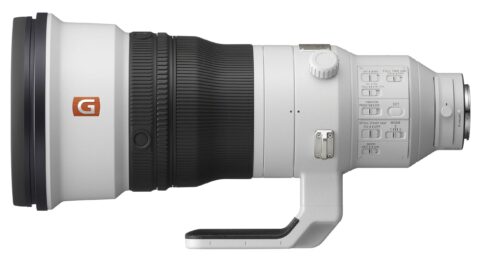
- Price – $12,700
- Weight – 6.4 lb / 2895 g
The 400mm f/2.8 GM can be an excellent option for photographing large mammals and medium to large birds when paired with the 1.4x and 2x teleconverters. It’s less ideal for smaller songbirds, where the 1200mm option, derived from a 600mm lens and a 2x teleconverter, is often useful. On its own, though, there may be times when a wider lens would be desired, so most people would end up pairing this with a 70-200mm or 100-400mm lens if the added weight can be tolerated by the photographer or airline.
Solo Sony 300mm f/2.8 GM
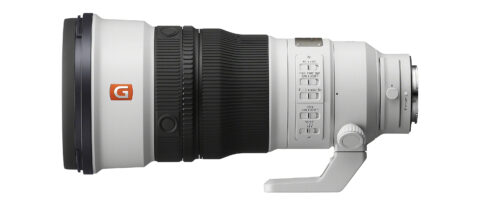
- Price – $6,500
- Weight – 3.24 lb (1470 g)
If weight is your main concern, you can choose to carry just the 300mm GM lens and a pair of teleconverters. I know at least a couple of professional wildlife photographers who now prefer this option over carrying a 400mm GM or 600mm GM when they need to hike long distances with their gear. It’s great that Sony users have this lightweight option, though I believe that, in general, this lens is (relatively) so light that most people carrying it should also be able to find the space and strength to carry a 70-200mm f/2.8 to fill the focal length gap on the short end, especially when a teleconverter is attached to the 300mm. That second lens would really help reduce many in-the-field teleconverter changes that might introduce dust to the sensor.
Sony 300mm f/2.8 GM + Sony 70-200mm f/2.8 GM II

- Price – $9,500
- Weight – 5.54 lb (2515 g)
This is a significantly better option than a solo 300mm GM, and I also prefer it to pairing the 300mm GM with the aging 100-400mm GM. The GM II version of the 70-200, paired with a 2x teleconverter, is almost indistinguishable from the image quality of the 100-400mm f/4.5-5.6 GM (I sold my 100-400 for that reason), but gives you much more light in the 70-200mm range (f/2.8), and more in the 98-320mm range (f/4).
The downside of this pairing is that, for maximum effect, both lenses require teleconverters, and you might need to buy a second 2x teleconverter. For example, if you keep a 2x converter on your 300mm lens all the time as your 600mm option, you will probably find yourself wanting to switch between a 1.4x and a 2x converter on the 70-200mm lens to reach 320mm or 400mm. This adds another $500 to the cost and 7.3 oz (207 g) to the weight. You’re also limited to 600mm on the long end of this setup, making it less than ideal for dedicated bird photographers.
600mm f/4 GM + 200-600mm f/5.6-6.3 G
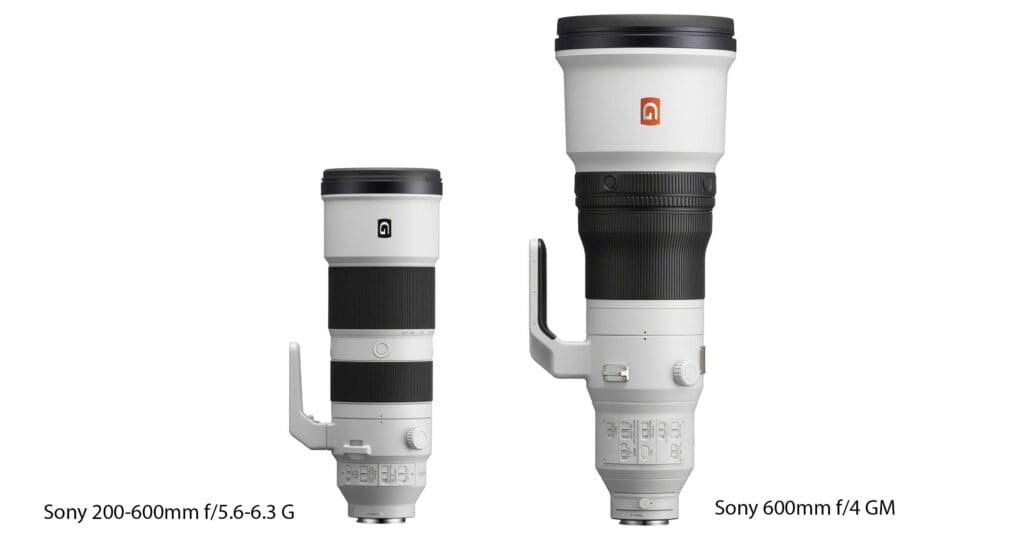
- Price – $15,800
- Weight – 11.4 lb / 5115 g
This combination fills in the focal length gap below the 600mm prime lens nicely, and also gives you a great lens for fast-paced BIF photography. The first downside is the slightly reduced image quality of the G zoom compared to the GM prime. The second is the ramp from f/5.6 to 6.3, which occurs right around 300mm, meaning most of a wildlife photographer’s shooting with this lens will be limited to f/6.3. The third downside is the overall size and weight of this combination. There are two long lenses, and though they will fit in a bag like the Gura Gear Kiboko 30L+, it doesn’t leave much room for anything else.
600mm f/4 GM + 400-800mm f/6.3-8
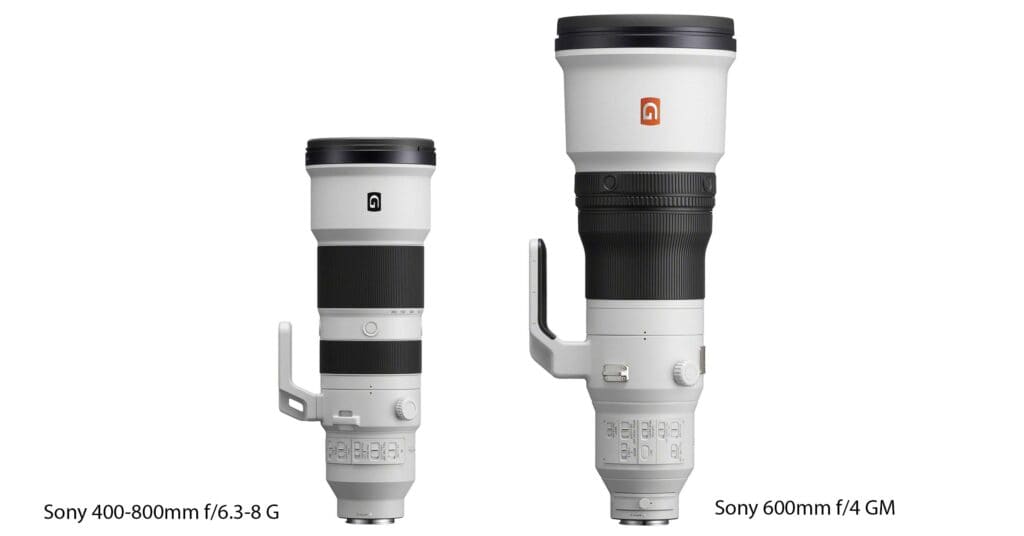
- Price – $17,000
- Weight – 12.15 lb (5510 g)
This is an interesting, if heavy and expensive, pairing that I have been experimenting with since the launch of the 400-800mm lens. Since you are losing some focal length options on the short end but gaining them on the longer end, this is a pairing that works well for people who are inclined towards more than occasional bird photography, or who are on a particular mission to photograph a tiny creature. I miss a wider option when larger mammals are involved.
Like the 200-600mm, one major downside of this pair is the physical length of both lenses, which makes it difficult to pack both in a carry-on bag along with two cameras and essential accessories. In low-light situations, you’ll tend to prefer the f/4 lens to keep ISO low and image quality high, but this limits your options for a wider view. Again, it’s best for small creatures or some safari locations where getting closer to the wildlife is difficult or forbidden.
600mm f/4 GM + 300mm f/2.8 GM
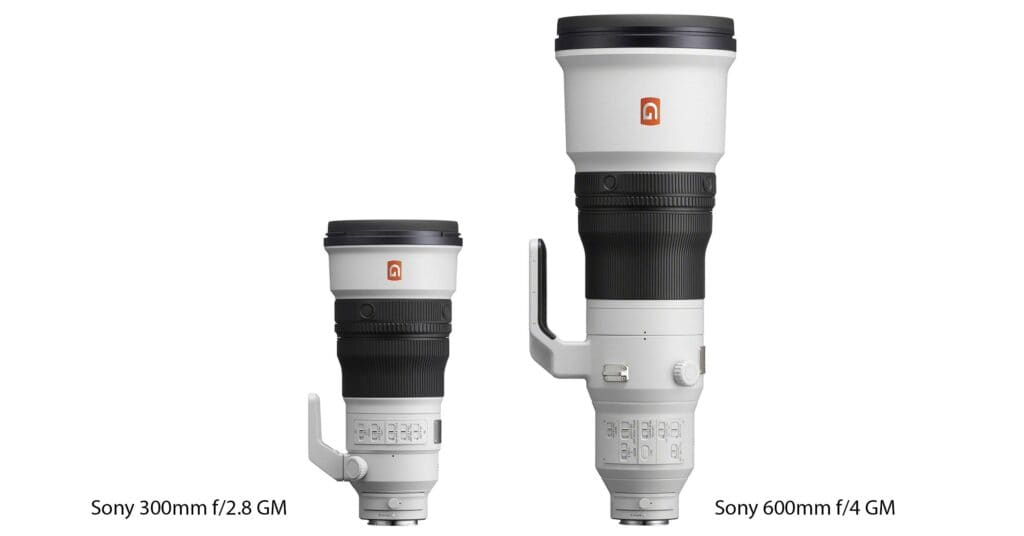
- Price – $20,200
- Weight – 9.94 lb / 4510 g
This is a good combination if you can afford it. With 1.4x and 2x teleconverters, it offers focal lengths of 300mm, 420mm, 600mm, 840mm, and 1200mm. Compared to the 200-600mm or 400-800mm setups, you lose the quick framing flexibility of a zoom for shots below 600mm; however, the overall weight is 1.4 lb (660 g) to 2.21 lb (1002 g) lighter than those options, and the 300mm GM lens is much shorter than either zoom, making it easier to pack in a bag that’s already carrying a 600mm GM. The 300mm focal length will be at f/2.8, and the 420mm at f/4, compared to f/6.3 for both focal lengths with the 200-600mm lens – great for dark locations. The image quality of the 300mm is also better than the 200-600mm or 400-800mm, and the autofocus is faster for birds in flight.
600mm f/4 GM + 100-400mm f/4.5-5.6 GM
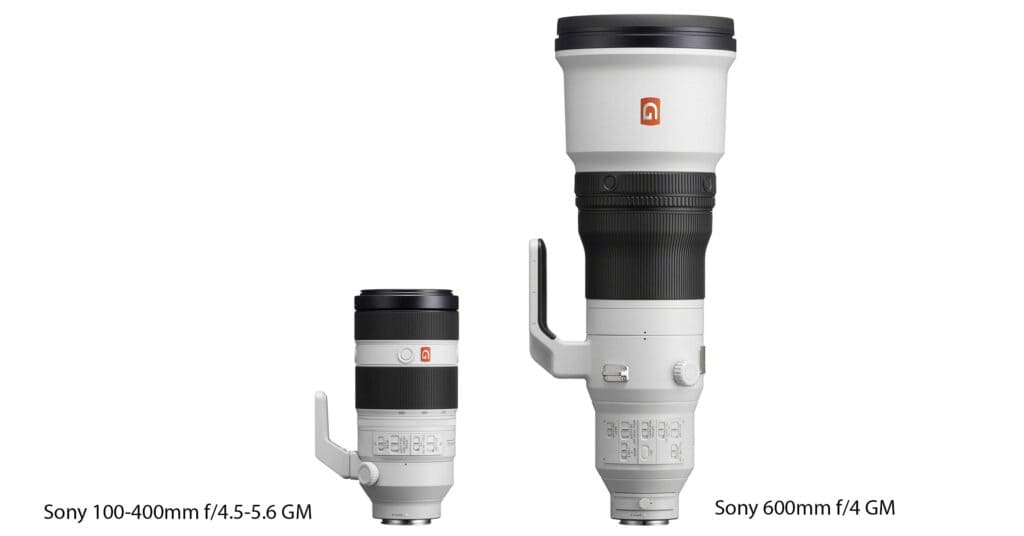
- Price – $16,400
- Weight – 9.8 lb / 4435 g
Another popular combination that is even easier to pack than the above 600mm+300mm combo, since the 100-400mm GM lens isn’t as wide as the 300mm GM. Note, however, the only slight difference in weight, although there is a significant difference in total cost. One thing I dislike about this combination is that the 100-400mm GM, an aging lens in the Sony lineup, doesn’t work well with teleconverters, thereby minimizing its overall usefulness if you ever wanted to use it on its own for a lighter day. You also lose a full stop of light at the 400mm focal length compared to the 420mm f/4 combination that’s available with the 300mm GM and a 1.4x teleconverter.
Sony 600mm f/4 GM + 400mm f/2.8 GM
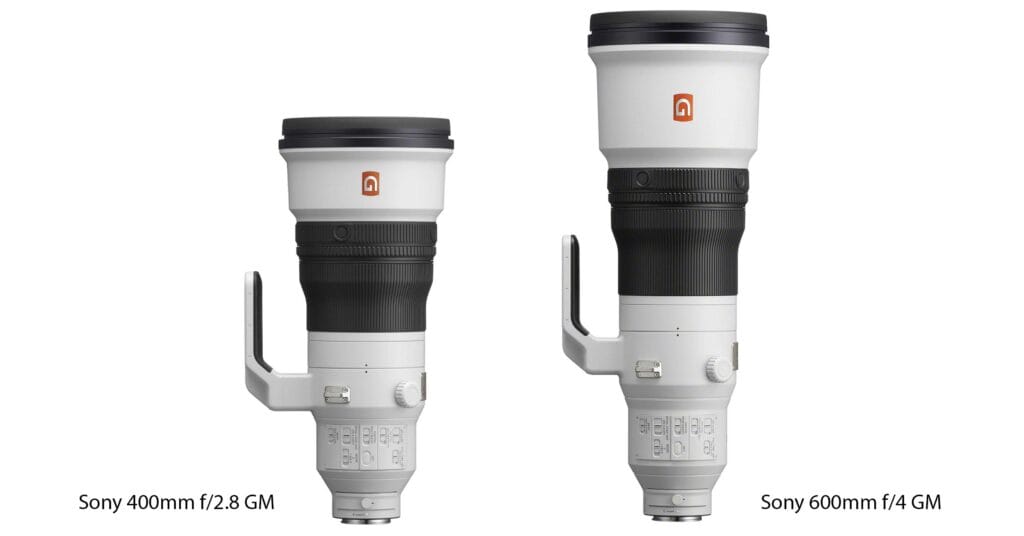
- Price – $26,400
- Weight – 13.1 lb / 5940 g
I’m sure that in some people’s eyes, this is the holy grail of telephoto lens combinations, but the total weight and cost make it a tough sell. I consider myself reasonably fit, and I would still hate to carry this load while traveling, not to mention the difficulty of fitting both these prime monsters and their cameras and accessories into a carry-on bag. Since buying the 300mm GM, I’ve also come to find the 300mm focal length handy – I’d miss it if I chose this setup. This combination is a nice idea if you’re driving around in a place like Yellowstone, where subjects mostly appear roadside, but it’s impractical for simultaneous use in most other cases.
TWO Sony 300mm f/2.8 GMs

- Price – $13,000
- Weight – 6.48 lb / 2940 g
A pair of Sony 300mm f/2.8 GM lenses is cheaper and lighter than a single 600mm f/4 GM, and half the price ($13,400 less!!) than the previous 400mm+600mm prime combination. Another benefit is that they are much shorter than those lenses, allowing you to downsize your carry-on backpack. For example, instead of carrying everything in a Gura Gear Kiboko 30L+ as I normally would, a pair of 300mm GMs with two cameras and accessories comfortably fit in the Kiboko 22L+.
The maximum magnification of the Sony 300mm f/2.8 GM is 0.16x, compared to the 0.14x of the 600mm GM. However, remember that this will increase to 0.32x when the 2x teleconverter is applied to the 300mm to give an apples-to-apples focal length comparison. If you can closely approach your subject, this makes subjects far larger in the frame when using the 300mm than the 600mm.
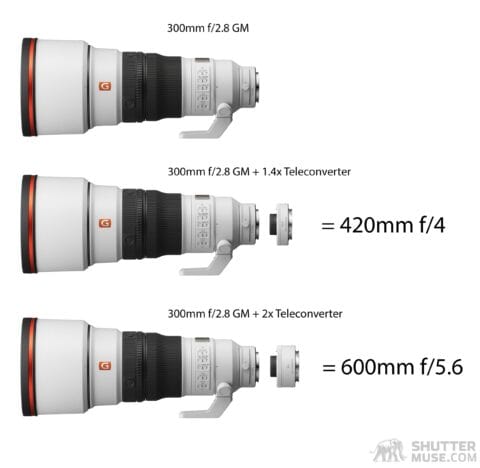
Of course, the point of considering this 300mm duo option is to have at least one of them constantly rigged up with a teleconverter. I imagine that if I opted for this combo, I’d leave a 2x teleconverter attached to one of them all the time for my 600mm f/5.6 option, and swap the second lens between 300mm and 420mm from time to time, depending on the light levels. Compared to carrying both the 600mm GM and the 300mm GM, this double-300mm combo saves you around $7,000 and 3.5 lb (1,570 g)!
Compared to any combination that includes a G zoom, the pair of 300mm GM lenses is lighter, but loses the fast focal length flexibility. On the plus side, the 300mm GMs are faster to focus, more accurate at focusing, sharper (even with teleconverters), and have far larger maximum apertures at comparable focal lengths. I wouldn’t normally advocate for a lens purchase when the plan is to attach a teleconverter to achieve a desired focal length nearly permanently, but the 300mm GM is a special lens, and no other lightweight telephoto primes exist in the Sony lineup.
Perhaps the biggest drawback of this 300mm combination is that your focal length is absolutely maxed out at 600mm, which is rarely enough for die-hard bird photographers. I often find 600mm is plenty of focal length for large raptors, but seldom sufficient for small songbirds, grassland dwellers, or even skittish ducks and shorebirds. If you are truly passionate about bird photography, you’ll be better suited to the 600mm f/4 or a 400-800mm lens.
Perhaps the biggest combination competition for lightweight-minded photographers is pairing the 300mm GM with the 70-200mm GM II. On the negative side, opting for a second 300mm GM instead of the 70-200mm GM II will cost you an extra $3500 and 0.88lb (400 g), and you lose the nice-to-have option of 200mm at f/2.8 for low-light, wide environmental portraits. On the positive side, the 300mm GM + 1.4x combination at 420mm focuses faster than the 70-200mm + 2x combination at 400mm.
Closing Thoughts – I Don’t Think I’m Crazy

Here’s the key question that got me thinking about all of this: If overall camera bag weight is a serious concern for you on an upcoming photo trip, would you prefer to have on the seat next to you in a safari vehicle or river boat: a single camera with a 600mm f/4 lens, or the far more versatile, slightly cheaper, more maneuverable and lighter setup of a pair of cameras, one with a 600mm f/5.6 lens and the other with either a 300mm f/2.8 or 420mm f/4 lens?
It would be nice if Sony had a lightweight 600mm lens, similar to Nikon’s 600mm f/6.3, but they don’t, and that leaves us needing to create that combination using the 300mm lens and teleconverters. Given the outstanding performance of the 300mm f/2.8 GM lens with either a 1.4x or 2x teleconverter, I’m not worried about that, and I struggle to think of a scenario where I wouldn’t come home with a broader collection of images from a pair of telephoto lenses compared to a sole 600mm prime.
You can also opt for the ultralight choice: a single 300mm GM lens and regularly swapping teleconverters. However, repeatedly removing the lens might allow sand and dust to enter in certain environments, and you could miss a shot during the process. I assure you there will be times when a wider or tighter shot seems ideal, but you’ll hesitate to change the teleconverter out for fear of missing it, only to end up with one less shot anyway.
Assuming I cannot pack both my 600mm f/4 and 300mm f/2.8 GM lenses because of weight or physical limits, I believe it makes sense to consider using two of Sony’s 300mm f/2.8 GM lenses on a wildlife photography trip, whether that means buying or renting a second one, as long as you don’t need focal lengths beyond 600mm. There are other medium-weight options for these focal lengths, such as pairing the 300mm GM lens with one of the G-line telephoto zooms. Still, the autofocus performance and light-gathering ability of the GM prime are hard to ignore in those comparisons, not to mention the lighter weight of the 300mm prime duo.
Of course, some will read this and scoff at the prices involved. If you already have a single 300mm GM, are a few more shots from your trip worth spending another $ 6,500? Everyone’s mileage will vary. On the other hand, if you’re already weighing up the price of purchasing a 400mm GM or 600mm GM, this pairing can save you money! Either way, I hope this article gives you food for thought.
Update (& vindication) – It turns out I’m not the only one thinking this! Not two hours after posting this article, I was emailing with someone who plans to do precisely this: buy a second 300mm GM to have two different focal lengths ready and mounted to cameras on safari.
Where to Buy
As always, I appreciate it when you use my links for your purchases. It helps me free up time in my schedule to create more content. The super-telephoto lenses discussed in this post are available through the links below. You might also want to use these links to check the current prices. The MSRPs mentioned in the article were accurate at the time; however, they tend to increase over time due to inflation and tariffs (in the US).
- Sony 70-200mm f/2.8 GM II – Amazon / B&H Photo / Adorama / Lensrentals / WEX (UK) / Camera Canada
- Sony 100-400mm f/4.5-5.6 GM – Amazon / B&H Photo / Adorama / Lensrentals / WEX (UK) / Camera Canada
- Sony 200-600mm f/5.6-6.3 G – Amazon / B&H Photo / Adorama / Lensrentals / WEX (UK) / Camera Canada
- Sony 400-800mm f/6.3-8 G – Amazon / B&H Photo / Adorama / Lensrentals / WEX (UK) / Camera Canada
- Sony 300mm f/2.8 GM – Amazon / B&H Photo / Adorama / Lensrentals / WEX (UK) / Camera Canada
- Sony 400mm f/2.8 GM – Amazon / B&H Photo / Adorama / Lensrentals / WEX (UK) / Camera Canada
- Sony 600mm f/4 GM – Amazon / B&H Photo / Adorama / Lensrentals / WEX (UK) / Camera Canada
- Sony 1.4x Teleconverter – Amazon / B&H / Adorama / Lensrentals / WEX (UK) / Camera Canada
- Sony 2x Teleconverter – Amazon / B&H / Adorama / Lensrentals / WEX (UK) / Camera Canada

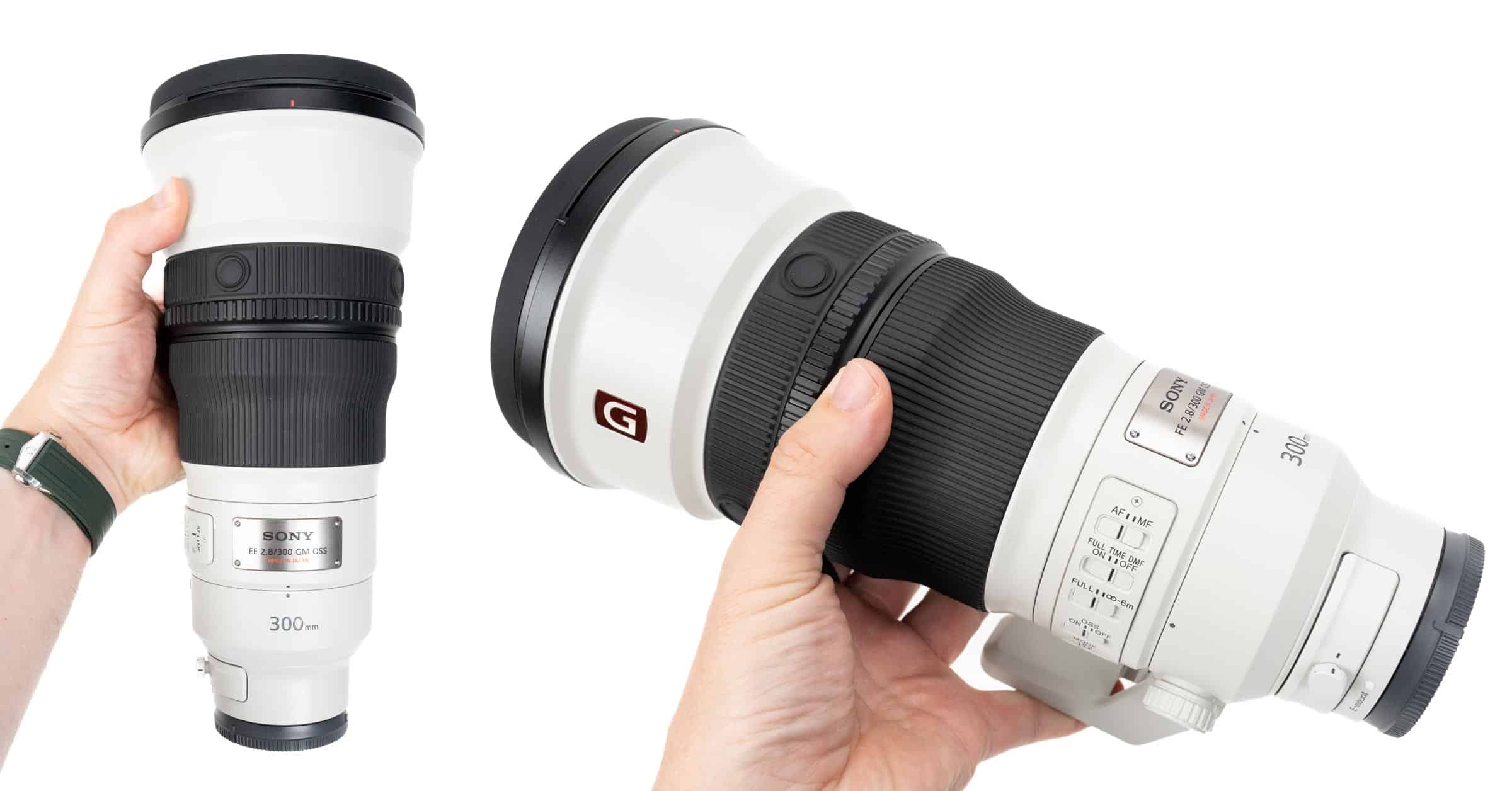
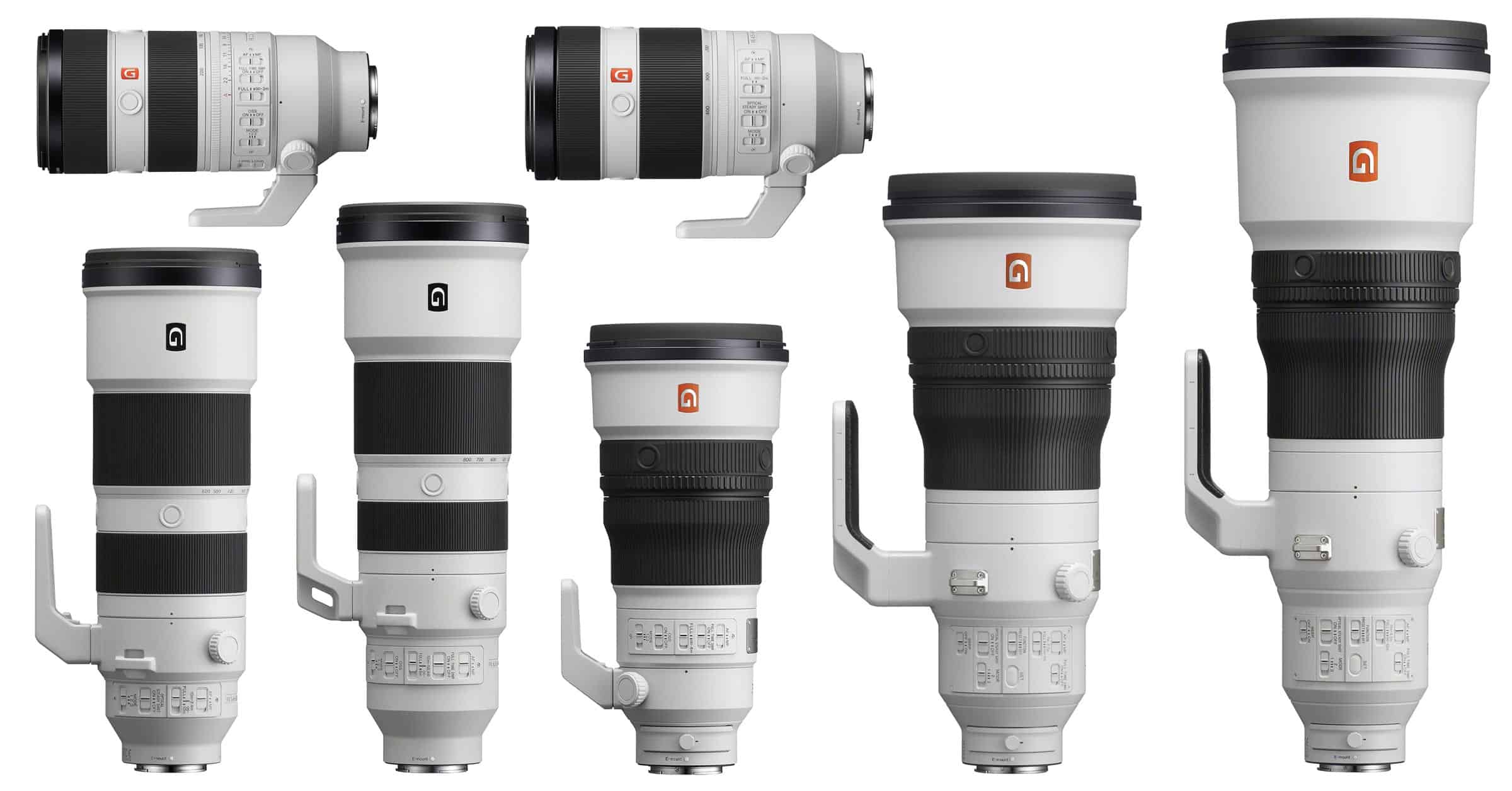

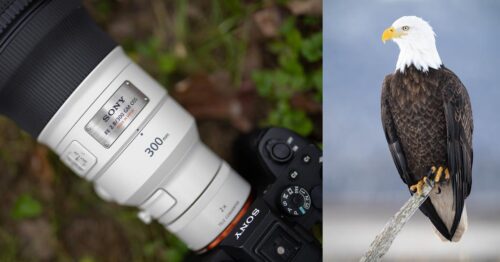
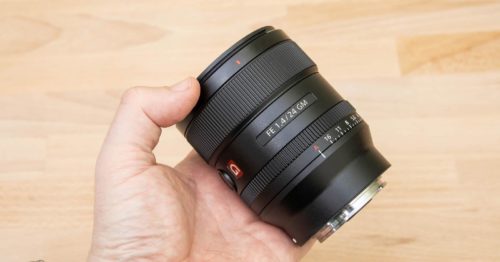
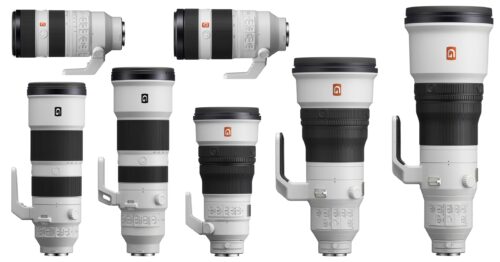
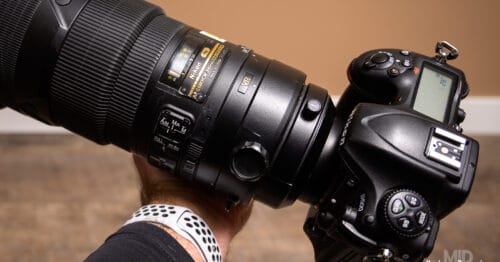

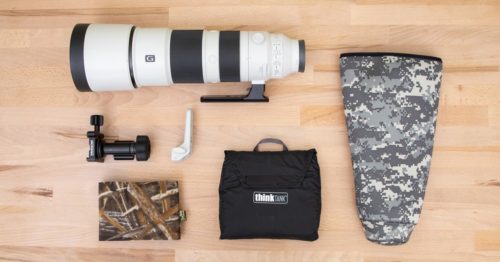
Dan, I enjoyed your article and I agree that the Sony 300mm f2.8 lens, fabulous by itself, is one of the few lenses that does not degrade image quality when paired with a teleconverter. In my case, it is the ONLY lens that does well with a 2X TC. Admitedly, I have only tried the Sony 100-400, 200-500, and Nikon 200-500.
Personally, I go shooting birds with two cameras: a Sony a1 with 100-400 and a Sony a1 Mk II with 300 + 2X TC. This gives me range of 100 to 600mm, exceptional sharpness, relative light weight to carry and shoot hand-held, and the ability to crop the 50MP image to “extend” the range even further.
You are one of the few photo reviewers who has pointed out the excellence of the 300mm + teleconverters. Keep up the good work!
I meant the Sony 200-600. There is no Sony 200-500! Also, the Sony 300mm + 2X TC on the Sony a1 Mk II focuses very fast, almost as fast as the 300mm lens by itself.
One important thing I forgot to mention in my previous comment is that the 300mm lens + 2x TC also mantains Sony’s excellent autofocus performance, essential for wildlife photography.